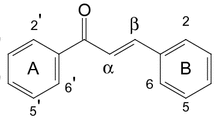Abstract
Four new lanostane-type triterpenes (inonotusanes D–G, 1–4), including a 24,25,26,27-tetranorlanostane, together with 11 known compounds (5–15), including 7 lanostane derivatives, 2 steroids and 2 aromatic compounds, were isolated from the sclerotia of Inonotus obliquus. Their structures were elucidated by 1D and 2D NMR spectroscopy and HRMS. To our knowledge, 1 is the first 24,25,26,27-tetranorlanostane-type triterpenoid from fungus, and this is the first time that 31-member lanostane-type triterpenes, 5 and 6, have been isolated from the sclerotia of I. obliquus instead of from its submerged culture. 7 and 8 are also new isolates of this genus. Compounds 1, 8, 12 and 13 exhibited strong cytotoxicity against the 4T1 (mouse breast cancer) cell line, with IC50 9.40, 7.79, 9.06 and 9.31 μM, respectively. 8, 12 and 13 also exhibited strong cytotoxicity against the the MCF-7 (human breast cancer) cell line, with IC50 8.35–9.01 μM.





Similar content being viewed by others
References
Taji S, Yamada T, Wada S, Tokuda H, Sakuma K, Tanaka R (2008) Lanostane-type triterpenoids from the sclerotia of Inonotus obliquus possessing anti-tumor promoting activity. Eur J Med Chem 43:2373–2379
Zheng WF, Zhang MM, Zhao YX, Wang Y, Miao KJ, Wei ZW (2009) Accumulation of antioxidant phenolic constituents in submerged cultures of Inonotus obliquus. Bioresour Technol 100:1327–1335
Handa N, Yamada T, Tanaka R (2010) An unusual lanostane-type triterpenoid, spiroinonotsuoxodiol, and other triterpenoids from Inonotus obliquus. Phytochemistry 71:1774–1779
Tanaka R, Toyoshima M, Yamada T (2011) New lanostane-type triterpenoids, inonotsutriols D, and E, from Inonotus obliquus. Phytochem Lett 4:328–332
Nakamura S, Iwami J, Matsuda H, Mizuno S, Yoshikawa M (2009) Absolute stereostructures of inoterpenes A–F from sclerotia of Inonotus obliquus. Tetrahedron 65:2443–2450
Nakata T, Yamada T, Taji S, Ohishi H, Wada S, Tokuda H, Sakuma K, Tanaka R (2007) Structure determination of inonotsuoxides A and B and in vivo anti-tumor promoting activity of inotodiol from the sclerotia of Inonotus obliquus. Bioorgan Med Chem 15:257–264
Zhao FQ, Mai QQ, Ma JH, Xu M, Wang X, Cui TT, Qiu F, Han G (2015) Triterpenoids from Inonotus obliquus and their antitumor activities. Fitoterapia 101:34–40
Sholichin M, Miyahara K, Kawasaki T (1982) Spirocyclic nortriterpenes from bulbs of Scilla scilloides II. New spirocyclic furanoid nortriterpenes and related tetranortriterpene spirolactones. Heterocycles 17:251–257
Kuroda M, Mimaki Y, Ori K, Koshino H, Nukada T, Sakagami H, Sashida Y (2002) Lucilianosides A and B, two novel tetranor-lanostane hexaglycosides from the bulbs of Chionodoxa luciliae. Tetrahedron 58:6735–6740
Ori K, Koroda M, Mimaki Y (2003) Lanosterol and tetranorlanosterol glycosides from the bulbs of Muscari paradoxum. Phytochemistry 64:1351–1359
Ono M, Takatsu Y, Ochiai T, Yasuda S, Nishida Y, Tanaka T, Okawa M, Kinjo J, Yoshimitsu H, Nohara T (2012) Two new nortriterpenoid glycosides and a new phenylpropanoid glycoside from the bulbs of Scilla scilloides. Chem Pharm Bull 60:1314–1319
Shin Y, Tamai Y, Terazawa H (2000) Chemical constituents of Inonotus obliquus (Pers: Fr.) Pil. (Aphyllophoromycetideae) III: a new triterpene, 3β,22,25-trihydroxy-lanosta-8-ene from sclerotia. Int J Med Mushrooms 2:201–207
Rios JL, Andujar I, Recio MC, Giner RM (2012) Lanostanoids from fungi: a group of potential anticancer compounds. J Nat Prod 75:2016–2044
Rios JL (2011) Chemical constituents and pharmacological properties of Poria cocos. Planta Med 77:681–691
Taji S, Yamada T, Tanaka R (2008) Three new lanostane triterpenoids, inonotsutriols A, B, and C, from Inonotus obliquus. Helv Chim Acta 91:1513–1524
Shin Y, Tamai Y, Terazawa M (2000) Chemical constituents of Inonotus obliquus. Eurasian J For Res 1:43–50
Kahlos K, Hiltunen R (1986) 3β,22-dihydroxylanosta-7,9(11),24-triene a new, minor compound from Inonotus obliquus. Planta Med 52:495–496
Liu C, Zhao C, Pan HH, Kang J, Yu XT, Wang HQ, Li BW, Xie YZ, Chen RY (2014) Chemical constituents from Inonotus obliquus and their biological activities. J Nat Prod 77:35–41
Tai T, Akahori A, Shingu T (1993) Triterpenes of Poria cocos. Phytochemistry 32:1239–1244
Yoshikawa K, Kuroboshi M, Arihara S, Miura N, Tujimura N, Sakamoto K (2002) New triterpenoids from Tricholoma saponaceum. Chem Pharm Bull 50:1603–1606
Coll J, Reixach N, Sanchez-Baeza F, Casas J, Camps F (1994) New ecdysteroids from Polypodium vulgare. Tetrahedron 50:7247–7252
Ying YM, Zhang LY, Zhang X, Bai HB, Liang DE, Ma LF, Shan WG, Zhan ZJ (2014) Terpenoids with alpha-glucosidase inhibitory activity from the submerged culture of Inonotus obliquus. Phytochemistry 108:171–176
Peng XR, Liu JQ, Wang CF, Li XY, Shu Y, Zhou L, Qiu MH (2014) Hepatoprotective effects of triterpenoids from Ganoderma cochlear. J Nat Prod 77:737–743
Kobori M, Yoshida M, Ohnishi-Kameyama M, Takei T, Shinmoto H (2006) 5α,8α-epidioxy-22E-ergosta-6,9 (11),22-trien-3β-ol from an edible mushroom suppresses growth of HL-60 leukemia and HT29 colon adenocarcinoma cells. Biol Pharm Bull 29:755–759
Ioannou E, Abdel-Razik AF, Zervou M, Christofidis D, Alexi X, Vagias C, Alexis MN, Roussis V (2009) 5α,8α-epidioxysterols from the gorgonian Eunicella cavolini and the ascidian Trididemnum inarmatum: isolation and evaluation of their antiproliferative activity. Steroids 74:73–80
Ohmura K, Miyase T, Ueno A (1989) Sesquiterpene glucosides and a phenylbutanoid glycoside from Hypochoeris radicata. Phytochemistry 28:1919–1924
Hye SK, Jin HC, Won KC, Jong CP, Jae SC (2004) A sphingolipid and tyrosinase inhibitors from the fruiting body of phellinus linteus. Arch Pharm Res 27:742–750
Author information
Authors and Affiliations
Corresponding authors
Ethics declarations
Conflict of interest
The authors declare that they have no conflict of interest.
Rights and permissions
About this article
Cite this article
Zhao, F., Xia, G., Chen, L. et al. Chemical constituents from Inonotus obliquus and their antitumor activities. J Nat Med 70, 721–730 (2016). https://doi.org/10.1007/s11418-016-1002-4
Received:
Accepted:
Published:
Issue Date:
DOI: https://doi.org/10.1007/s11418-016-1002-4




